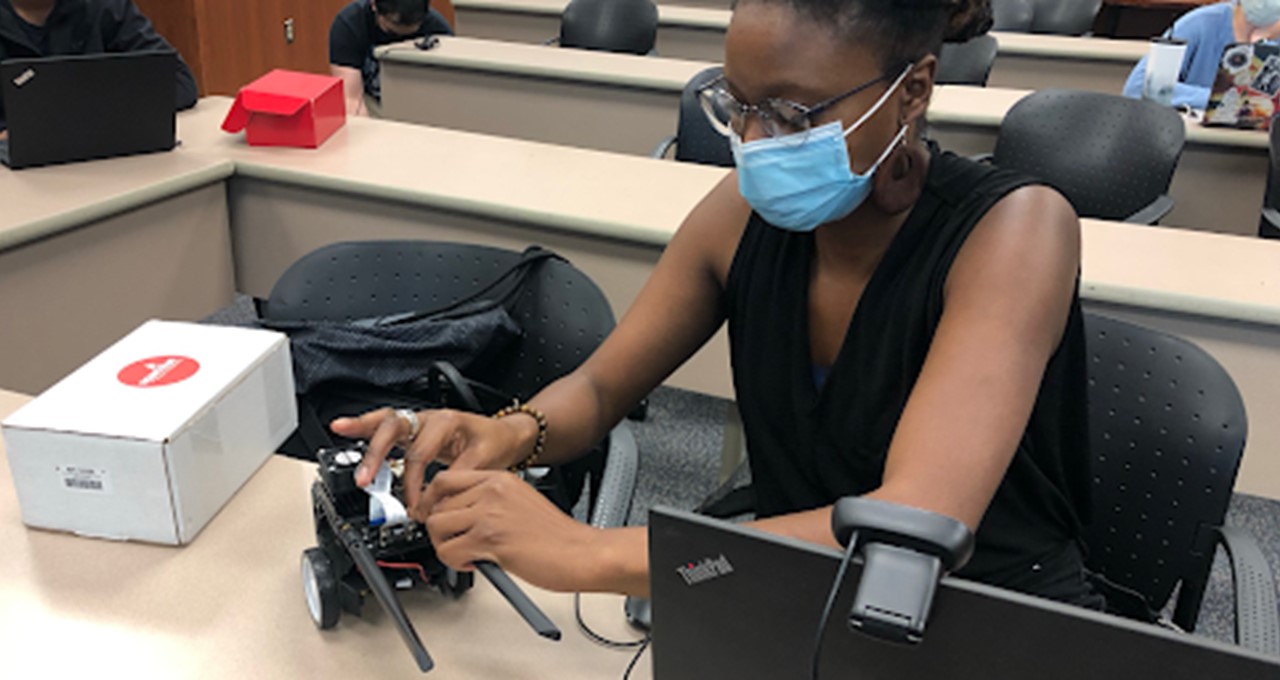The demand for specialization in AI and robotics is growing more than ever.
Roles in these two fields are multiplying across many industries, with titles such as AI specialist and robotics engineer, respectively, placing as the first- and second-fastest emerging jobs in the U.S., according to the most recent Emerging Jobs Report from LinkedIn.
With demand high, upskilling in these two fields is vital.
NVIDIA offers several opportunities and initiatives for students and developers to get hands-on experience in AI and robotics.
NVIDIA GTC, running Nov. 8-11, will offer a number of sessions aimed at equipping educators with the appropriate tools to integrate into their curricula, and many more to inspire makers and enthusiasts just getting started or already innovating with AI and robotics.
Educators around the world — from Kenya and Taiwan, to Pittsburgh and Houston — are bringing AI and robotics into the hands of students in their local communities. And they’ve been doing it with NVIDIA resources, such as the NVIDIA Emerging Chapters program, the NVIDIA Deep Learning Institute, NVIDIA Jetson Nano 2GB Developer Kit Grant Program and learning opportunities offered through GTC.
Higher Ed at GTC
GTC will feature several institutions in higher education that are offering application-based learning within the AI and robotics space.
Professors at the University of Oxford and the University of Maryland Baltimore College (pictured above) have collaborated with NVIDIA to create an Edge AI and Robotics Teaching Kit with interactive lectures and hands-on labs.
The course uses the NVIDIA Jetson Edge AI platform to teach fundamentals of computer vision-based deep neural networks, autonomous navigation, reinforcement learning, security and ethics, and conversational AI. The teaching kit is freely available and open source for educators to integrate into their own courses and curricula.
Moreover, the University of Manchester and Coursera have partnered with NVIDIA to design a series of courses with content on both basic and advanced robotics principles, including camera-based navigation, map-based localization and computer vision.
The final project of the course will involve learning about intelligent navigation and exploration with the PuzzleBot Jetson Edition, a configurable robotics platform equipped with NVIDIA Jetson Nano for robot vision and intelligent robot navigation.
AI & Robotics 101
GTC also offers an abundance of courses that provide basic education on AI and robotics, all of which are meant to spur interactive applications.
Beginners who’d like to delve into the basics of AI should add these sessions to their calendars: “Begin Your AI Journey With NVIDIA Jetson Nano” (A31723) and “Getting Started With the Edge AI and Robotics Teaching Kit” (A31535).
For those interested in learning more about robotics and autonomous machines, GTC includes sessions on how to develop features and increase capabilities of robots with NVIDIA Isaac ROS (A31574), updates on the NVIDIA Isaac Gym environment for high-performance reinforcement learning (A31118), and how to leverage Isaac Sim 2021.2 for simulation manipulation, navigation and synthetic data generation (A31573).
To explore how to apply some of this knowledge to real-world tools and use cases, check out these sessions: “Your First Steps to Design an Intelligent Assistant for Hands-Free Applications” (A31186) and “Train. Adapt. Optimize. Supercharge Your AI Development Workflow and Application Development With NVIDIA TAO Toolkit” (A31193).
Register for GTC
Register for free to learn more about NVIDIA Jetson during GTC. And watch NVIDIA founder and CEO Jensen Huang’s GTC keynote address streaming on Nov. 9 and in replay.
